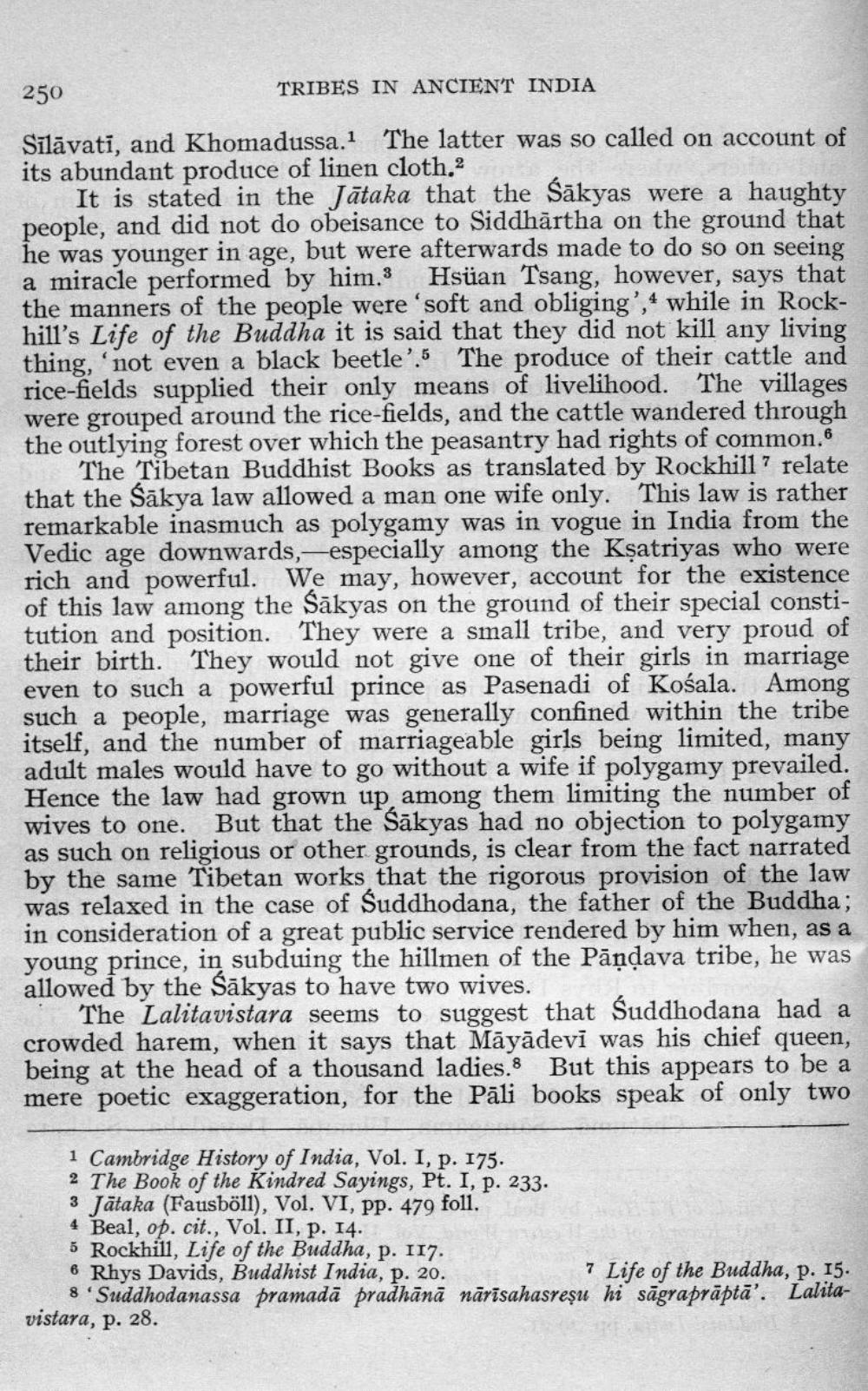________________
250
TRIBES IN ANCIENT INDIA
Sīlāvati, and Khomadussa.1 The latter was so called on account of its abundant produce of linen cloth.2
It is stated in the Jātaka that the Sākyas were a haughty people, and did not do obeisance to Siddhārtha on the ground that he was younger in age, but were afterwards made to do so on seeing a miracle performed by him. Hsuan Tsang, however, says that the manners of the people were ‘soft and obliging',4 while in Rockhill's Life of the Buddha it is said that they did not kill any living thing, 'not even a black beetle'.5 The produce of their cattle and rice-fields supplied their only means of livelihood. The villages were grouped around the rice-fields, and the cattle wandered through the outlying forest over which the peasantry had rights of common.6
The Tibetan Buddhist Books as translated by Rockhill ? relate that the sākya law allowed a man one wife only. This law is rather remarkable inasmuch as polygamy was in vogue in India from the Vedic age downwards, especially among the Ksatriyas who were rich and powerful. We may, however, account for the existence of this law among the Sākyas on the ground of their special constitution and position. They were a small tribe, and very proud of their birth. They would not give one of their girls in marriage even to such a powerful prince as Pasenadi of Košala. Among such a people, marriage was generally confined within the tribe itself, and the number of marriageable girls being limited, many adult males would have to go without a wife if polygamy prevailed. Hence the law had grown up among them limiting the number of wives to one. But that the Sākyas had no objection to polygamy as such on religious or other grounds, is clear from the fact narrated by the same Tibetan works that the rigorous provision of the law was relaxed in the case of Suddhodana, the father of the Buddha; in consideration of a great public service rendered by him when, as a young prince, in subduing the hillmen of the Pāņdava tribe, he was allowed by the Sākyas to have two wives.
The Lalitavistara seems to suggest that Suddhodana had a crowded harem, when it says that Māyādevi was his chief queen, being at the head of a thousand ladies. But this appears to be a mere poetic exaggeration, for the Pāli books speak of only two
1 Cambridge History of India, Vol. I, p. 175. 2 The Book of the Kindred Sayings, Pt. I, p. 233. 3 Jataka (Fausböll), Vol. VI, pp. 479 foll. 4 Beal, op. cit., Vol. II, p. 14.. 5 Rockhill, Life of the Buddha, p. 117. 6 Rhys Davids, Buddhist India, p. 20.
| 7 Life of the Buddha, p. 15. 8 Suddhodanassa pramadā pradhānā nārīsahasreşu hi sāgraprāptā'. Lalitavistara, p. 28.




